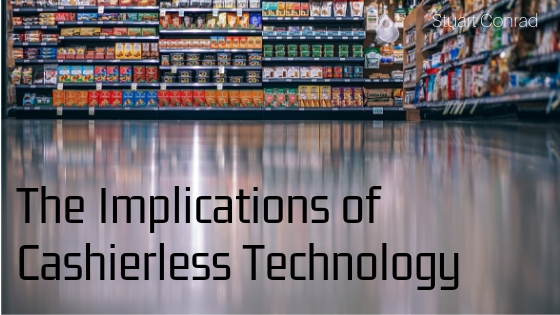This year, the United States saw the opening of multiple Amazon Go stores in major cities such as Seattle, Chicago, and San Francisco. Also, the plans to open as many as 3,000 Amazon Go stores within the next three years, could make these convenience-style grocery stores more of a household name than the anomaly they currently are. These stores are opening and fueling the conversation about how the concept of cashierless shopping will change the retail landscape. Will they be better for the consumer and the owner or are they merely perpetuated by greed and pursuit of margin expansion?
Amazon is the first company to offer this type of shopping experience to the public. With tap and go technology, shoppers download the Amazon Go app on their phones, scan a barcode to gain entry to the store, select their items and leave without ever standing in a checkout line or pulling out a wallet. Amazon is utilizing state-of-the-art tech with the implementation of sensors, computer visions, artificial intelligence, and deep learning to achieve this. All of these technologies work together to identify what a customer has chosen and to ensure they are being charged correctly.
While there are hurdles that will need to be overcome before a tap and go technology such as this can be expanded to include full-size grocery stores, other retailers like Walmart and the major retailer owner Ahold Delhaize have plans to implement similar store models. As retail models like these emerge on the scene, it will be essential that the retailers address concerns such as, what happens when there is a technological glitch, or an Internet outage, or how will the retailer ensure that it can accept all forms of payment, including EBT cards.
That said, there definitely appears to be some positives from the consumer’s perspective that could arise from this type of shopping experience. Customers would welcome the reduction of inconveniences that are associated with the traditional checkout process, such as less time spent in the grocery store, and fewer interactions. With regard to the retailer, some positives that this tap and go technology offer would include elimination of the cost that is related to cashiers, and reduction of theft and overall store loss. Despite the hefty setup costs, it could help to provide massive savings in the long run.
The naysayers will say that this business model feeds off of corporate greed and that by eliminating the cost that comes with having human cashiers, you are also eliminating jobs. This type of grab-and-go convenience store could also be a threat to fast food and casual restaurants and other forms of small grocery-style stores. An additional gripe could be related to privacy concerns as shoppers are surrounded by numerous sensors, artificial intelligence, and cameras that are needed to collect the significant amount of data needed to pull off this shopping experience.
While it is unclear if this type of technology will be successful in a full-size grocery format, it will be interesting to watch it unfold in the Amazon Go stores and monitor its appeal. We’ll soon know if this model is the ultimate convenience or just an overreaching disturbance and reduction of customer service?

